Overview
The essential elements of custom web design for SaaS success are paramount:
- Intuitive user experience
- SEO integration
- Responsive design
- Branding consistency
- Performance optimization
- Robust security features
- Seamless integration capabilities
- Ongoing support and maintenance
These components are not merely suggestions; they are critical to enhancing user engagement, fostering trust, and ensuring long-term business growth. By effectively implementing these strategies, SaaS offerings can distinguish themselves in a competitive market. It is imperative for businesses to recognize and act upon these elements to achieve sustained success.
Introduction
Custom web design emerges as a pivotal element for success within the fiercely competitive realm of Software as a Service (SaaS). By transcending generic templates, businesses are empowered to craft distinctive digital experiences that deeply resonate with their target audience, thereby fostering engagement. Yet, the challenge resides in grasping the essential components that underpin effective custom web design.
What specific strategies can SaaS companies adopt to ensure their websites not only draw visitors in but also convert them into devoted customers? This article delves into ten crucial facets of custom web design that are instrumental in realizing SaaS success.
SDA: Tailored Custom Software Development for Unique Web Design Needs
stands at the forefront of and , ensuring that web designs are not only visually captivating but also functionally robust. By honing in on the unique needs of each client, SDA crafts that significantly and drive . This empowers organizations to distinguish themselves in a , making it indispensable for . Embrace the opportunity to elevate your business with SDA's .
Custom Web Design vs. Templates: Key Differences and Benefits
offers unparalleled flexibility and distinctiveness, empowering businesses to forge a that authentically resonates with their target audience. Unlike templates, which frequently yield a generic appearance, fosters tailored that markedly enhance engagement and conversion rates. This differentiation is particularly crucial for striving to distinguish themselves in a competitive landscape.
For instance, a luxury retailer achieved a 7.1% by refining their product collection area, demonstrating how strategic planning can lead to . Similarly, an auto parts eCommerce site saw an impressive 129% surge in conversion rates after implementing custom strategies tailored to their audience's needs. Furthermore, a leading house plans retailer experienced a 25% rise in revenue per client due to , further illustrating the impact of on engagement.
Experts assert that a well-designed website must be intuitive, engaging, and effortless to navigate. Tony Herman emphasizes, "A well-designed website should be intuitive, engaging, and effortless to navigate. This is the foundation of a successful site that can truly captivate and convert your audience." Custom web design not only elevates visitor experience but also cultivates trust and credibility, which are essential for SaaS firms aiming to establish a formidable . By investing in custom web design, businesses can create memorable experiences that showcase their unique values and goals, ultimately driving long-term success.
Moreover, custom web design involves creating websites with SEO in mind, enhancing online visibility and attracting new customers, while also providing faster load times and lower maintenance needs compared to templates. The modular architecture of custom web design allows for functional extensions tailored to client needs, ensuring adaptability and scalability as businesses expand.
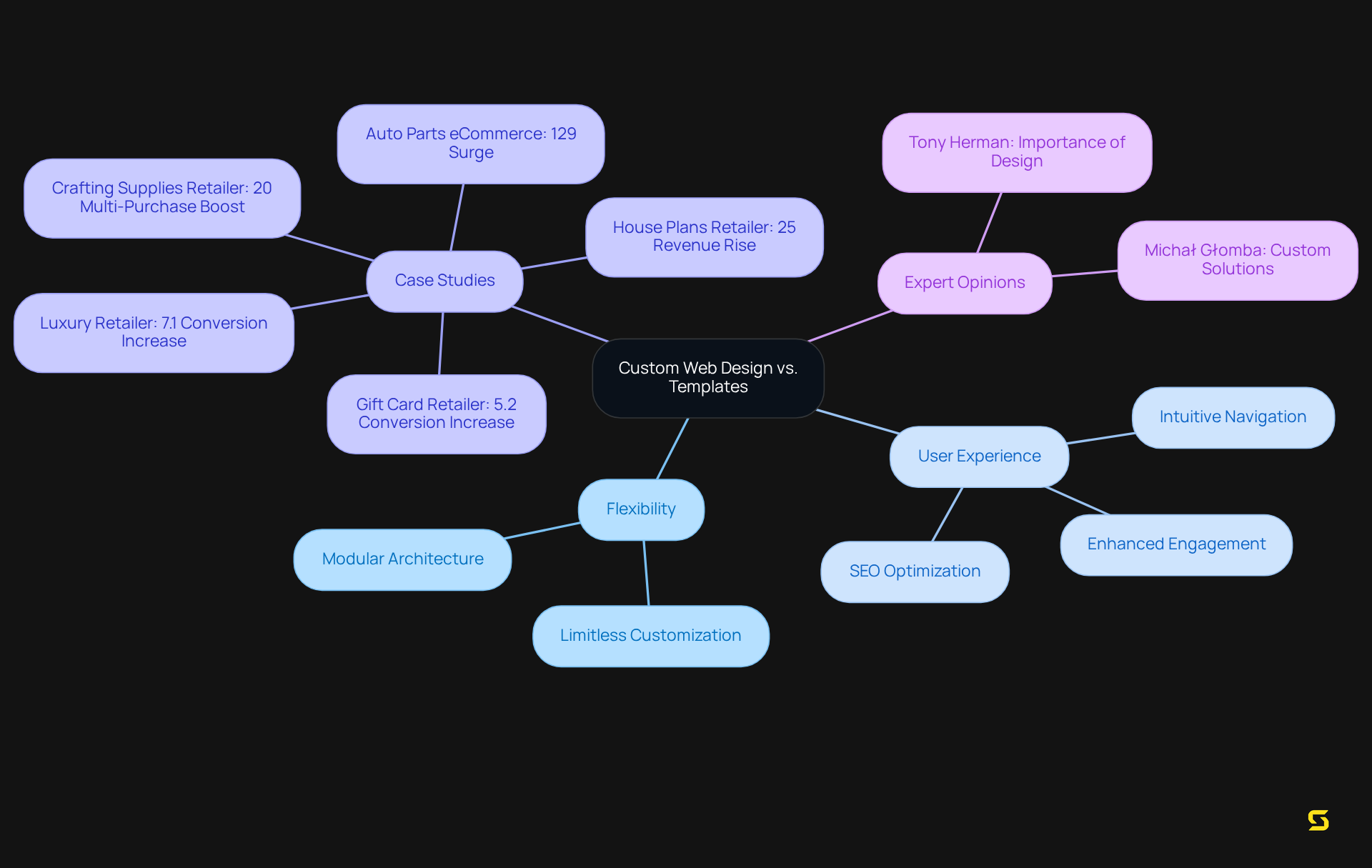
User Experience (UX): Prioritizing Intuitive Design for Better Engagement
Focusing on intuitive aesthetics in web applications is not just beneficial; it is essential for . simplify navigation, reduce friction, and motivate users to delve deeper into the platform. By applying , can craft experiences that not only attract users but also sustain their engagement over time. This strategic approach not only draws in users but also , ultimately .

Search Engine Optimization (SEO): Designing for Visibility and Traffic
Integrating SEO into the process is essential for and attracting targeted traffic. This requires optimizing site structure, , and ensuring fast load times. By prioritizing SEO from the outset, providers can significantly improve their chances of achieving higher positions in search engine results, thereby attracting more qualified leads to their platforms.
Successful software-as-a-service firms have demonstrated that a well-optimized website not only enhances user experience but also increases organic traffic; studies indicate that businesses publishing experience a 35.8% rise in Google traffic. Furthermore, 57% of than any other marketing channel, highlighting the effectiveness of SEO in lead generation.
As Andrew Shum, an SEO expert, states, 'A strategic approach to custom web design in website creation can enhance a platform's visibility and .' Additionally, with 66% of B2B purchasers discovering products through online search results, it is evident that incorporating into the development phase is crucial for and facilitating business expansion.
SaaS product owners are strongly encouraged to implement these SEO strategies early in their custom web design process to fully leverage their potential.
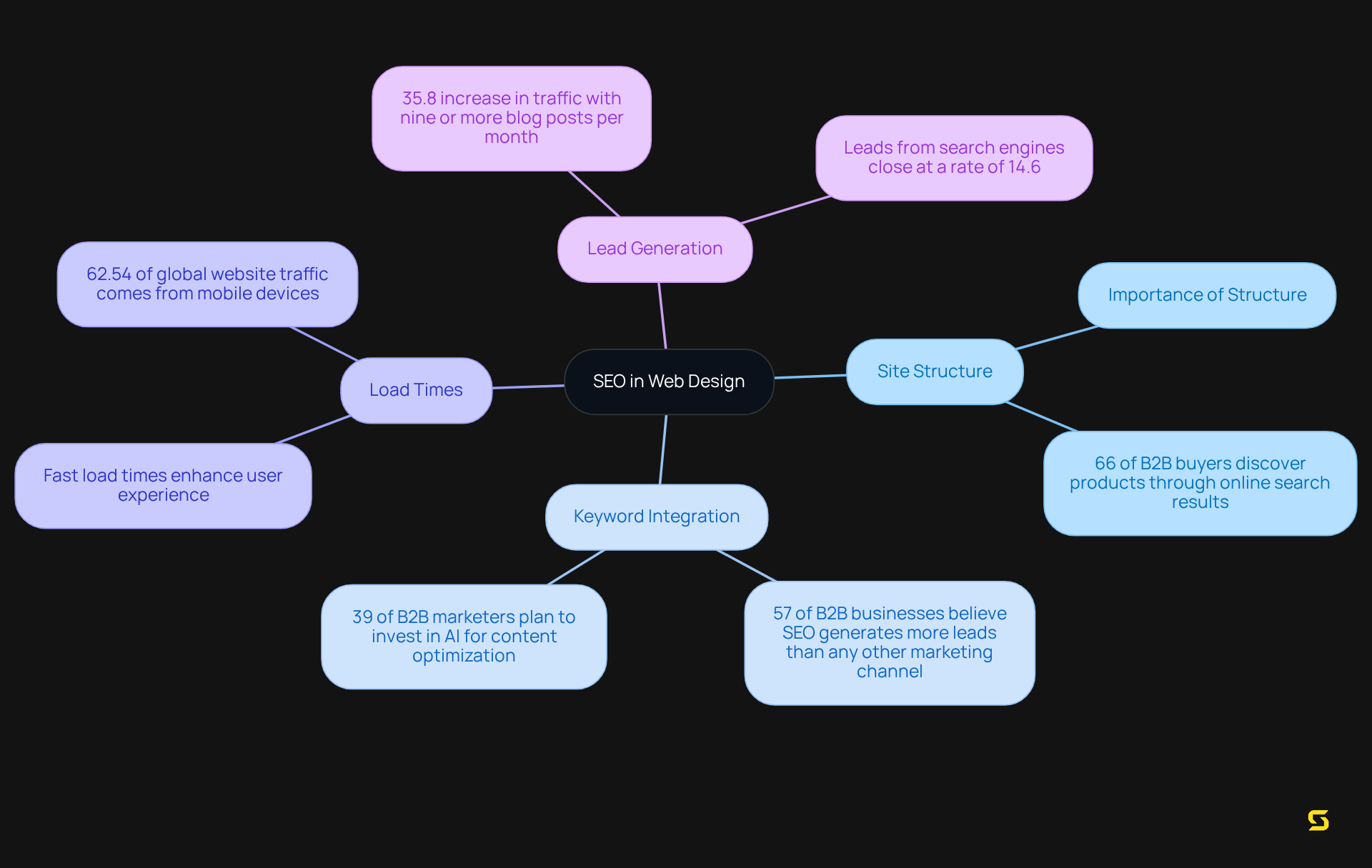
Responsive Design: Ensuring Accessibility Across All Devices
is not just beneficial; it is essential for ensuring that web applications function seamlessly across a variety of devices, from desktops to smartphones. This adaptability expands audience reach and guarantees a , which is crucial in today's mobile-centric world.
By focusing on adaptable layouts, organizations can significantly boost , ultimately leading to improved retention rates. Research indicates that visitors spend 260% more time on web pages containing videos, which are often integrated into adaptable layouts to enhance engagement.
Successful implementations of responsive frameworks in software services demonstrate that organizations adopting a experience increased user engagement and satisfaction levels. Industry specialists emphasize that mobile accessibility is a critical element in , with many noting that a well-executed responsive layout can set a product apart in a competitive market.
By concentrating on these design principles, software-as-a-service providers can create that not only meet but exceed customer expectations.
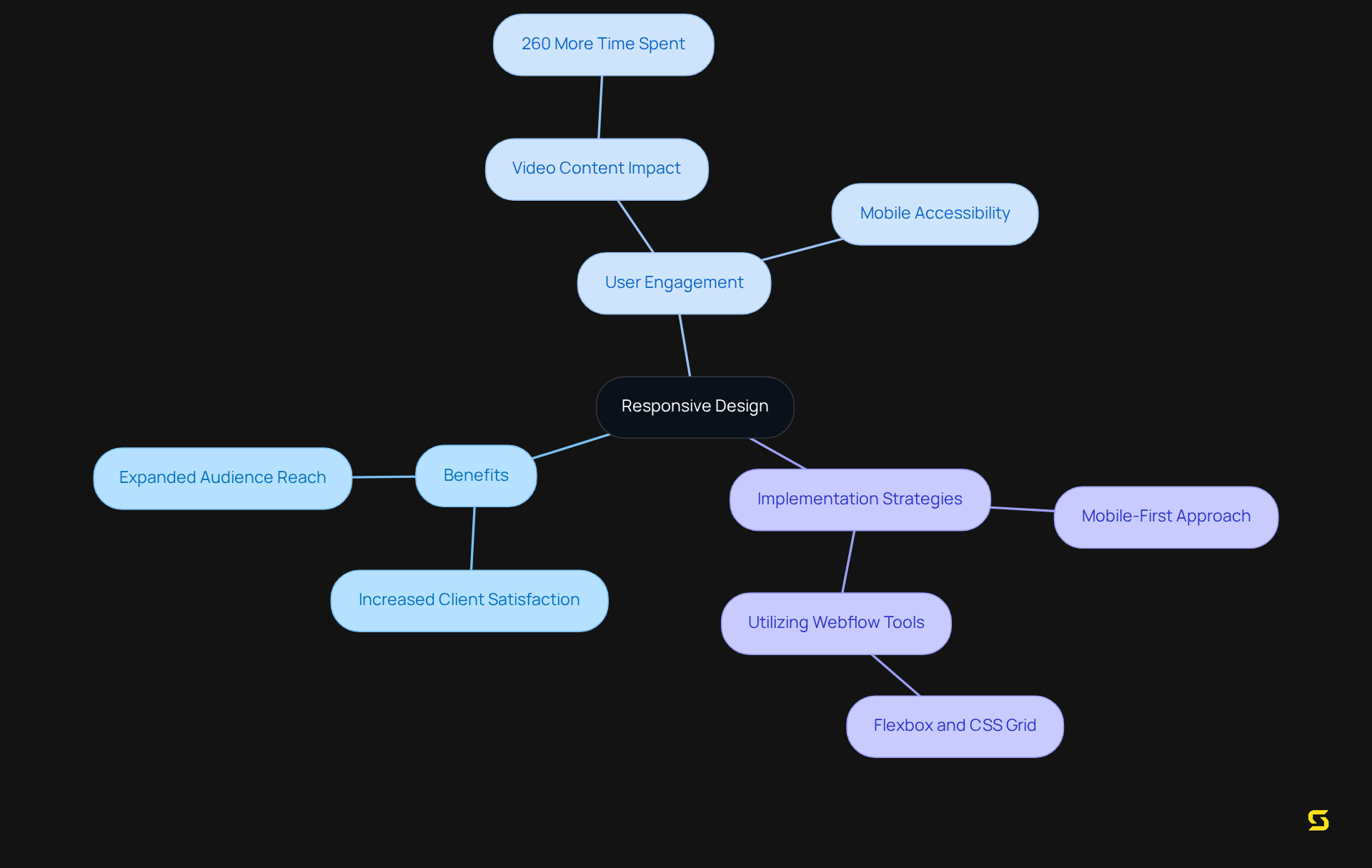
Branding Consistency: Creating a Cohesive Identity Across Platforms
Establishing across all platforms is essential for . This requires the strategic implementation of uniform colors, fonts, and messaging that resonate with the target audience. A unified brand presence not only fosters trust but significantly enhances user recognition, simplifying the process for to cultivate loyalty among their users.
Research shows that consistent branding can lead to a revenue increase of up to 23%, underscoring its critical role in driving business success. By aligning their branding efforts, providers can forge an , which is vital for enduring loyalty and support.
As states, "." This statement highlights the financial advantages of maintaining a cohesive brand identity. Moreover, research indicates that 36.5% of U.S. shoppers exhibit increased loyalty to brands they frequently purchase from, emphasizing the necessity for SaaS providers to prioritize branding consistency.
To implement , organizations must regularly assess their branding across all platforms and ensure that all team members are aligned with the established brand guidelines. The can be detrimental, leading to confusion, mistrust, and a diminished brand image, ultimately .
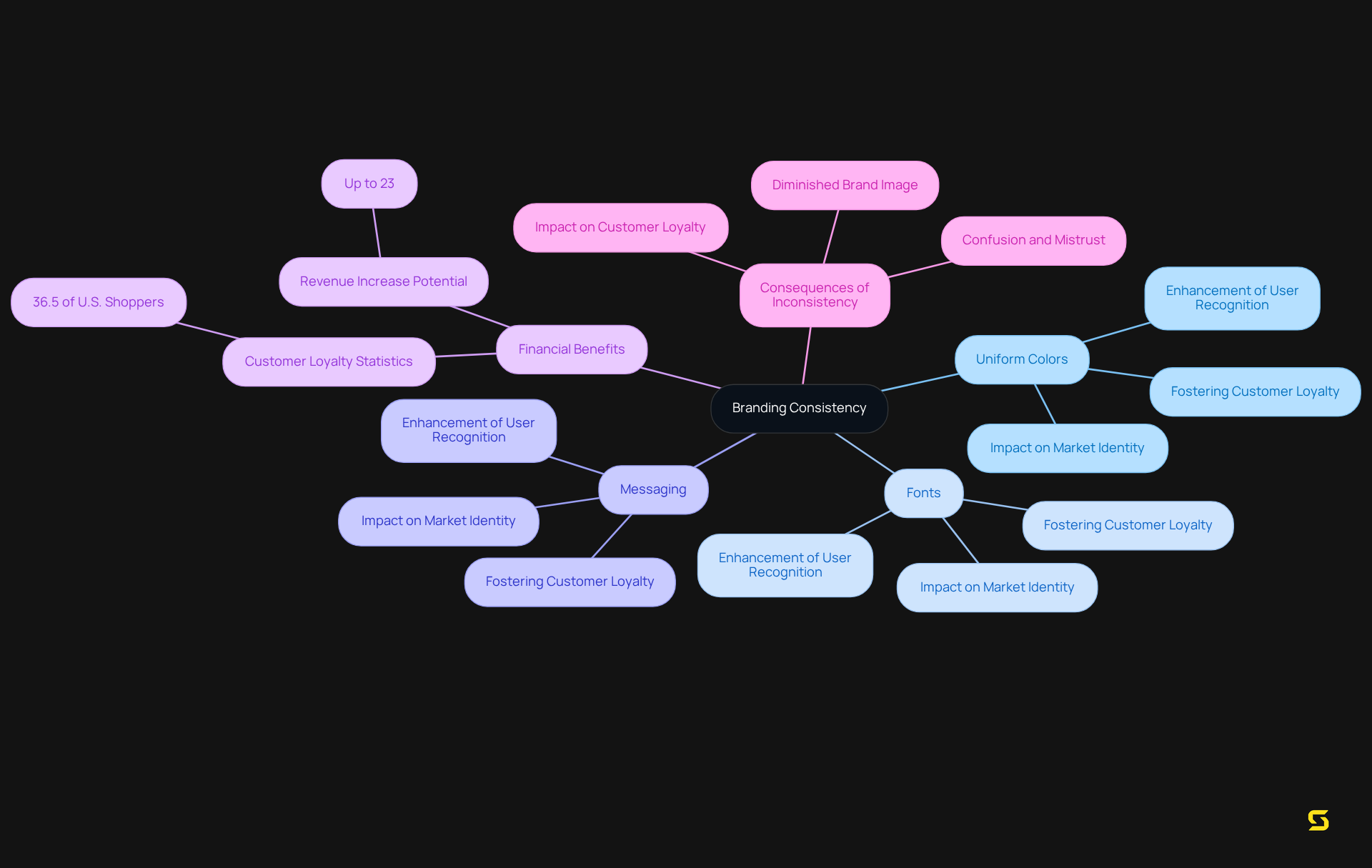
Performance Optimization: Enhancing Speed and User Retention
Optimizing performance is essential for and ensuring a for users. This encompasses:
- Minimizing load times
- Optimizing images
- Streamlining code
By focusing on performance, providers can , as users are more likely to return to applications that operate efficiently. Therefore, prioritizing performance is not merely a technical requirement; it is a that can lead to sustained success in a competitive landscape.
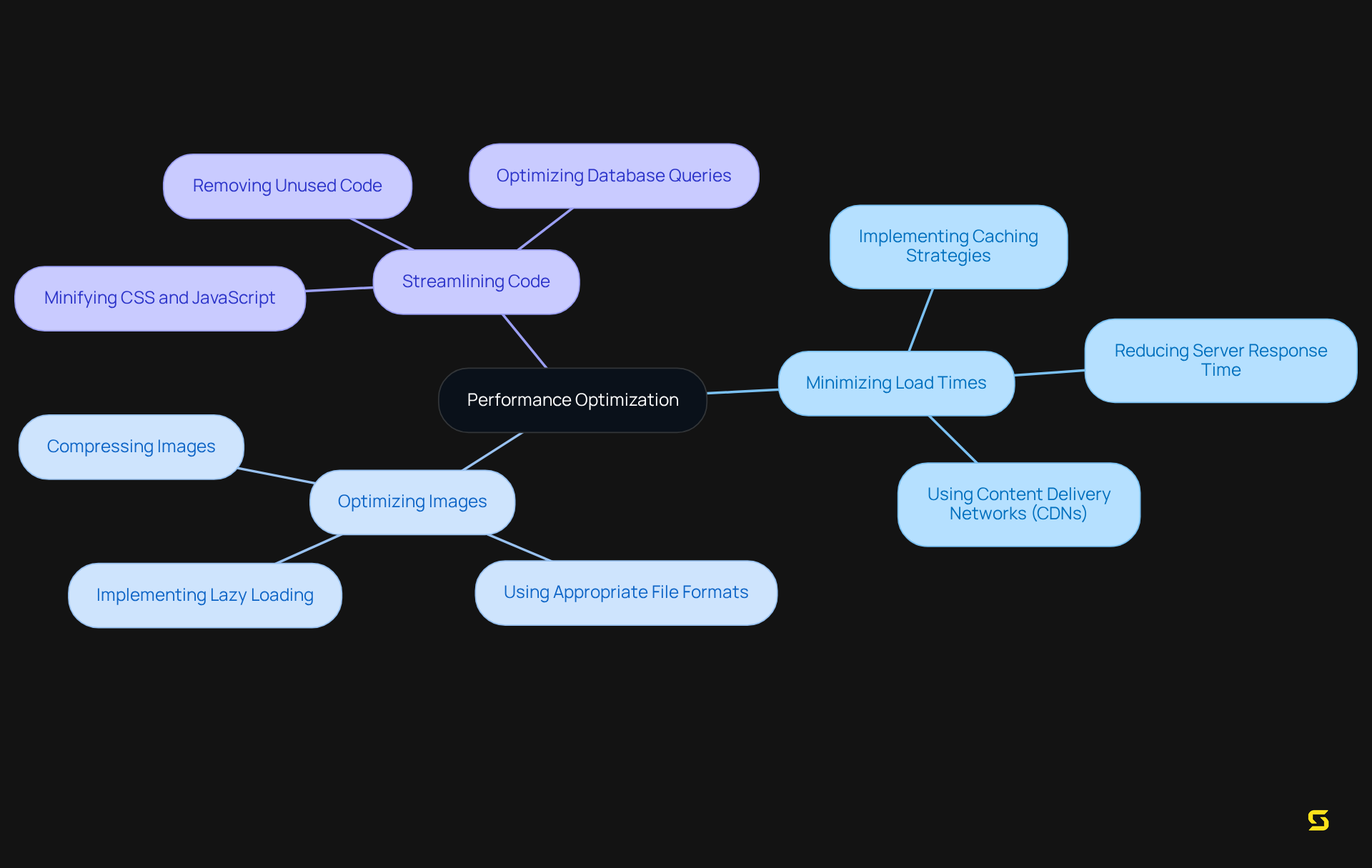
Security Features: Safeguarding User Data and Building Trust
Incorporating robust is essential for and establishing trust. This involves the implementation of:
- Encryption
By prioritizing security, providers can assure clients that their information is protected, thereby fostering a sense of . Such measures not only enhance the integrity of services but also position providers as leaders in a competitive landscape. Take action now to and your trust in service providers is well-placed.
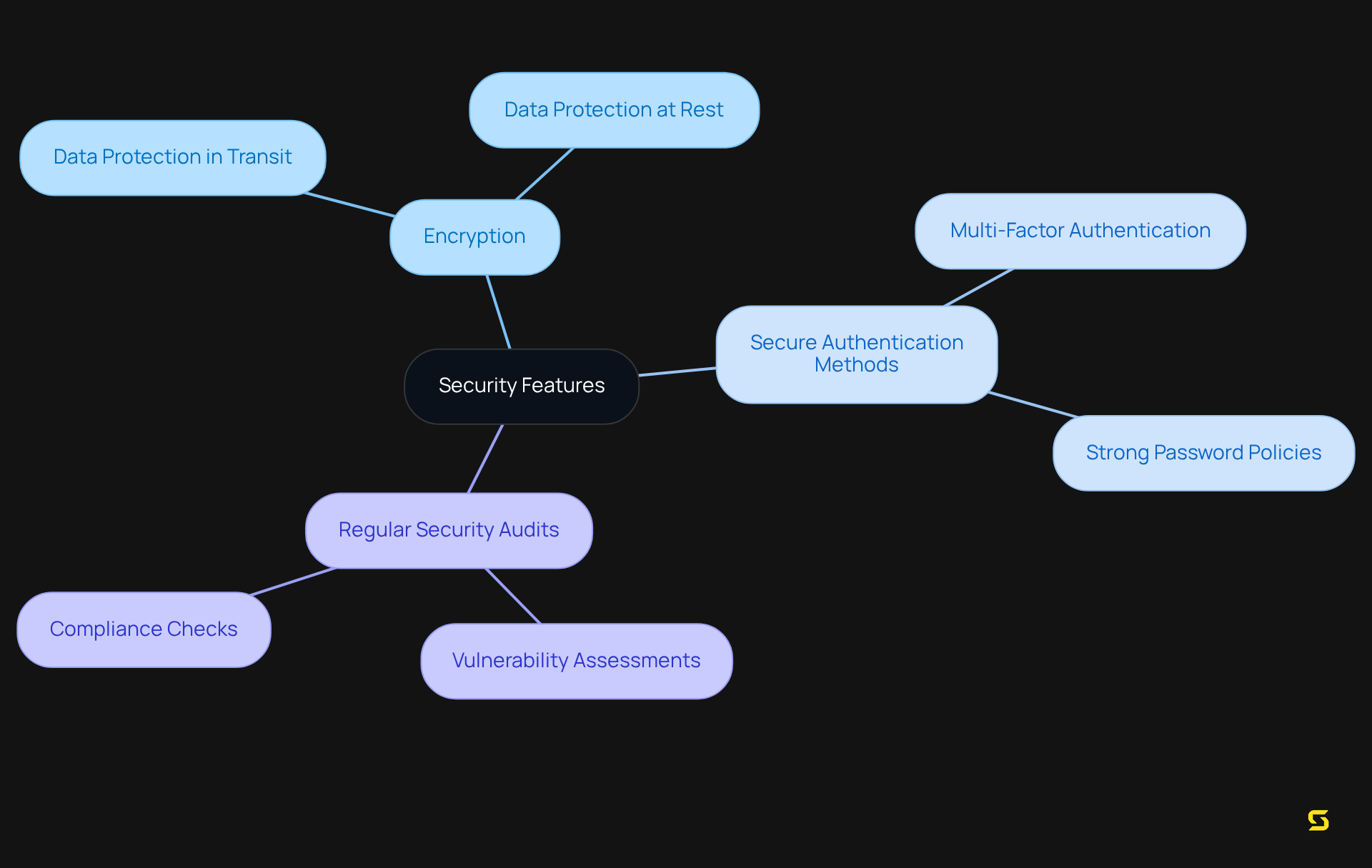
Integration Capabilities: Ensuring Seamless Functionality with Existing Systems
Ensuring with existing systems is paramount for . This integration encompasses compatibility with , streamlining workflows and improving efficiency. By focusing on integration capabilities, SaaS companies can deliver a more cohesive experience to clients, ultimately boosting satisfaction and retention.
Furthermore, enforcing HTTPS for API communications is critical to from interception, thus ensuring secure data transmission. Additionally, employing efficient , such as URI path versioning or query parameter versioning, is essential for managing changes without disrupting user experience.
Backward compatibility in API versioning is vital for maintaining trust and facilitating smooth transitions between API versions. is necessary to prepare users for updates and prevent confusion.
Numerous successful examples illustrate how companies leverage . Organizations that adopt robust API strategies often report increased engagement and satisfaction, as these integrations foster smoother interactions and data flows.
As industry leaders emphasize, enhancing API integration transcends being a mere technical requirement; it represents a strategic advantage that can significantly improve the overall experience for clients in software applications.
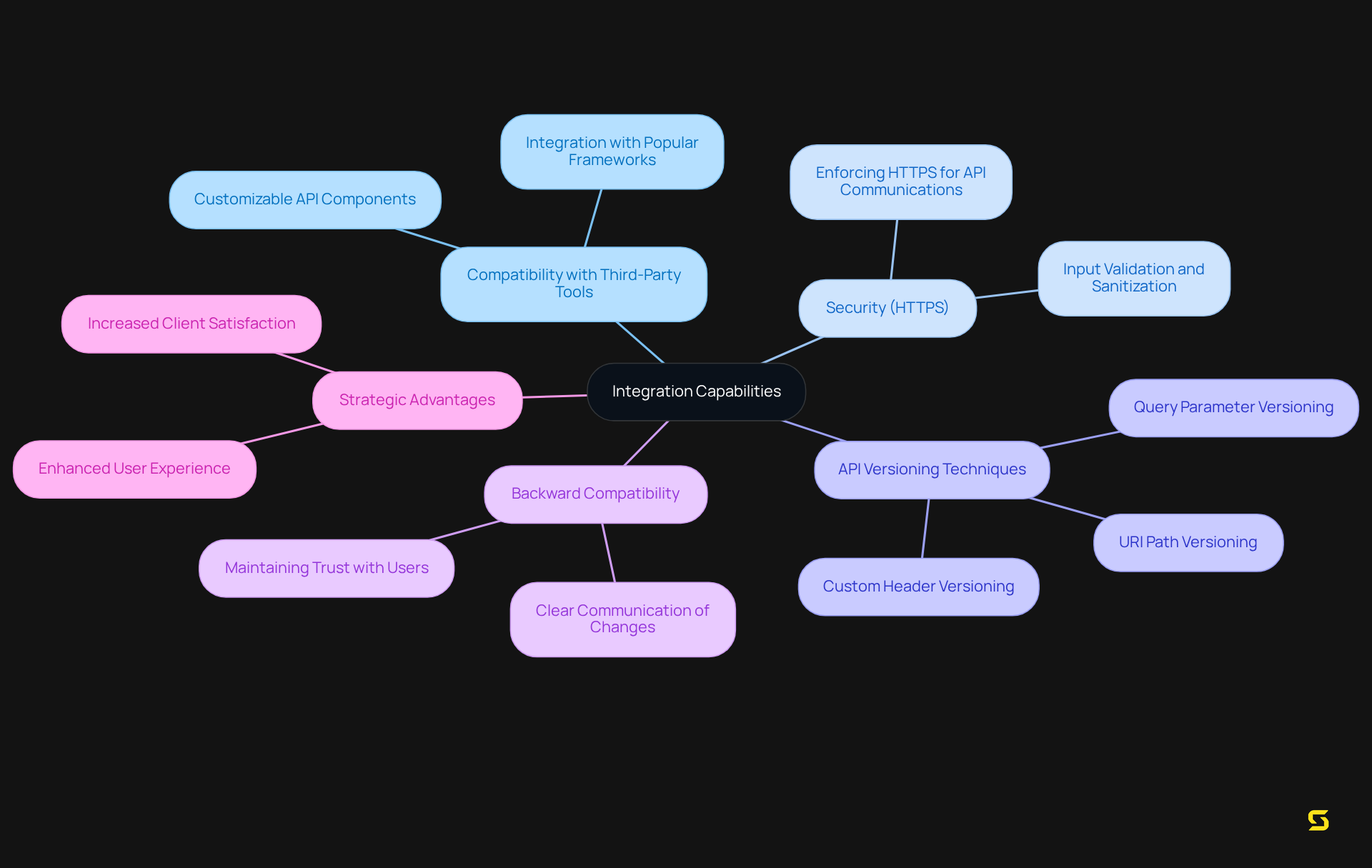
Ongoing Support and Maintenance: Ensuring Longevity and Effectiveness
are crucial for the longevity and effectiveness of web applications, especially in the . Regular updates, bug fixes, and client support services not only address immediate technical issues but also adapt to evolving customer needs. Statistics reveal that enhancing can lead to a , underscoring the direct link between maintenance efforts and . Moreover, 61% of clients are willing to invest at least 5% more for an improved customer experience, highlighting how can enhance financial outcomes for software companies.
Experts in software maintenance advocate for a , suggesting that regular updates and audience engagement strategies significantly elevate satisfaction levels. Best practices for SaaS maintenance in 2025 encompass the implementation of agile development frameworks, which facilitate quicker response times and more effective bug resolution. Additionally, utilizing customer feedback mechanisms can provide valuable insights that inform future updates and enhancements, directly contributing to satisfaction and retention.
Effective strategies for encompass not only technical support but also the cultivation of strong relationships with clients. Engaging customers through personalized communication and promptly addressing their concerns can transform their experience, increasing their likelihood of loyalty. In a competitive landscape where 89% of companies primarily compete on customer experience, prioritizing ongoing support and maintenance is essential for SaaS companies striving to thrive and retain their user base.
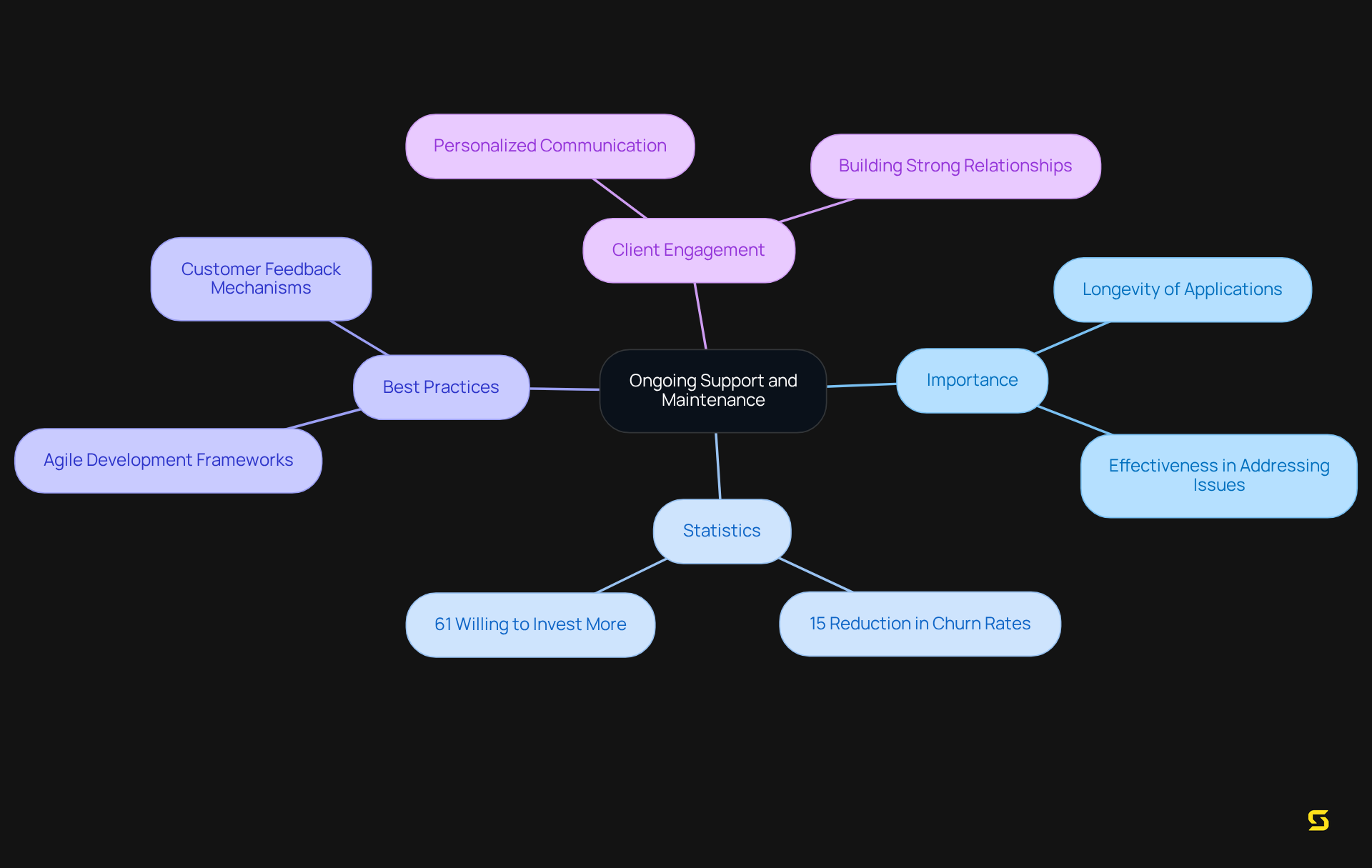
Conclusion
Custom web design is an essential element for the success of SaaS businesses, delivering tailored solutions that boost user engagement and distinguish brands in a competitive landscape. In contrast to generic templates, custom designs cultivate unique user experiences that resonate with target audiences, ultimately driving higher conversion rates and fostering customer loyalty.
Throughout this discussion, critical elements such as:
- User experience
- SEO integration
- Responsive design
- Branding consistency
- Ongoing support
have been highlighted as vital for creating effective web applications. Each of these components significantly contributes to building user trust, ensuring accessibility, and enhancing overall performance—factors that are indispensable for retaining clients and achieving long-term success in the SaaS arena.
In summary, investing in custom web design transcends mere technical choice; it represents a strategic imperative that can profoundly influence business growth and customer satisfaction. By adopting best practices in web design, SaaS providers can not only meet but surpass user expectations, paving the way for enduring success. It is crucial for organizations to prioritize these elements to establish a robust online presence that nurtures loyalty and drives revenue.
Frequently Asked Questions
What services does SDA offer in the realm of web design and software development?
SDA specializes in custom web design and software development, creating tailored solutions that enhance user engagement and drive business growth.
How does custom web design differ from using templates?
Custom web design offers greater flexibility and uniqueness, allowing businesses to create a brand identity that resonates with their target audience, while templates often result in a generic appearance.
What are the benefits of custom web design for SaaS companies?
Custom web design helps SaaS companies differentiate themselves in a competitive market, enhances user experiences, improves engagement and conversion rates, and builds trust and credibility.
Can you provide examples of businesses that benefited from custom web design?
A luxury retailer saw a 7.1% increase in conversion rates, an auto parts eCommerce site experienced a 129% surge in conversion rates, and a house plans retailer had a 25% rise in revenue per client due to custom web design strategies.
What are the key principles of effective user experience (UX) design?
Effective UX design should be intuitive, engaging, and easy to navigate, which simplifies user interactions and enhances overall engagement with the platform.
How does custom web design impact SEO and website performance?
Custom web design is created with SEO in mind, improving online visibility and attracting new customers, while also providing faster load times and lower maintenance needs compared to templates.
What is the importance of intuitive design in user engagement?
Intuitive design simplifies navigation, reduces friction, and encourages users to explore the platform more deeply, fostering lasting relationships and driving success in a competitive landscape.





